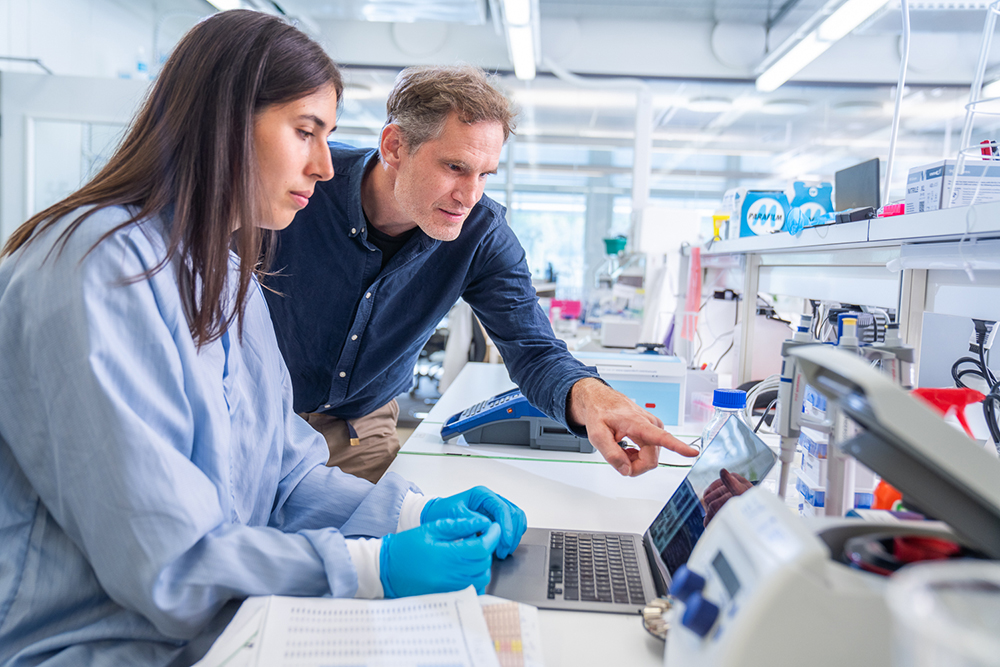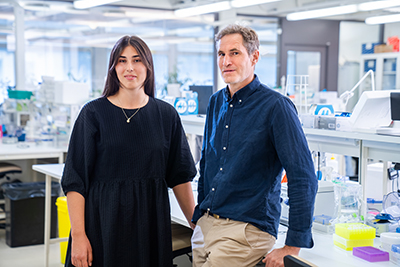The ocean's smallest creature is mapped

AI and humans in focus
How will a warmer climate affect the ecosystem? Genetic researchers at KTH Royal Institute of Technology are mapping changes in marine plankton to get closer to the answer. Using AI-based image analysis, the research has taken a big step forward.
Anders Andersson's research group in gene technology aims to improve Swedish marine environmental monitoring, which monitors and protects the sensitive marine environment. The researchers are collaborating with SMHI's oceanographic research unit, which is producing data for assessing the health of marine areas.
The focus is on the billions of microorganisms in the water. Different species of plankton are being mapped and analysed to understand their nutritional needs, relationships and adaptations to the environment.
A new project uses a high-tech camera, the Imaging Flow Cytobot, mounted on the research vessel Svea's expeditions in the Skagerrak, Kattegat and Baltic Sea. The expeditions generate hundreds of thousands of images of plankton that are analysed by a neural network trained to recognise the different species.
“AI is unbeatable when it comes to image analysis. It is much more efficient and we can analyse very large amounts of data, and at a lower cost. Developments are progressing rapidly, and AI methods are also providing more reliable results,” says Anders Andersson, professor of Metagenomics, who leads the research group.

Since all material is stored, it is also easy to reanalyse the images as the AI algorithms improve.
Plankton changes
Researchers have previously shown how the composition of marine plankton has changed over time, probably as a result of climate change. Some species, such as diatoms, have declined while the number of cyanobacteria has increased in many areas.
What the consequences of the shift in the plankton world might be, no one knows for sure. Research results point in different directions. Reports have shown vitamin B1 deficiencies in salmon and eider, among others. This may be related to the decline in diatoms, but is not yet clear. Earlier reports that some small crustaceans would become extinct have also proved to be at least partly incorrect, explains Andersson.
“There are many pieces of the puzzle to be put in place in the future so that we can get a complete picture of how the ecosystem is affected.”
At the same time, there is a lot at stake. Marine plankton creates half of the world's oxygen and produces food for the entire aquatic food chain - from small crustaceans to seals.
“The more and more reliable data we collect, the more we can learn about how the ocean works and take appropriate action when needed.”
Unexpected behaviours
With the help of the AI tool, the research team, together with SMHI, has also been able to gain a more nuanced understanding of phytoplankton behavioural patterns. It shows that plankton are ‘day commuters’ and move from the surface during the day down to the depths where they gather nutrients during the night. This is another valuable piece of the puzzle to get closer to a more complete picture.
“We didn't know that this was such an extensive behaviour and it would have been extremely time-consuming to analyse with traditional microscopy,” says Karin Garefelt, a PhD student working on programming AI networks for plankton analysis.
When will we be able to say something more certain about the impact of changes in marine plankton on the ecosystem?
“Hopefully, within a decade, enough data will have been collected on the ocean food web down to the plankton level. With such mapping as a basis, it will be possible to build models of the ecosystem and calculate the consequences for birds and fish, for example”, Andersson says.
Text: Christer Gummeson
